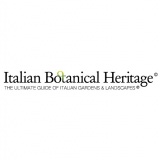
 Italian Botanical Heritage
Italian Botanical Heritage
Italian gardens: Dolomiti Bellunesi National Park
- WTI Magazine #132 Oct 24, 2020
-

 Italian Botanical Heritage
Italian Botanical Heritage
The Dolomiti Bellunesi National Park was officially opened in 1990. The Park covers not only the Belluno Dolomites, but also the Feltrine ones, namely the mountain groups: Vette, Cimònega, Pizzocco, Monti del Sole, and Schiara-Talvèna.
It is renowned for its naturalistic circular itineraries which generally run at modest altitudes and are dedicated to amateur hikers eager to learn about the flora, fauna and geology of these places.
Water is a very important element in the park: with the exception of high-altitude karstic areas (Circhi delle Vette, Piani Eterni, and Van de Zità) where rare streams disappear into underground cavities, the park is served by a thick network of water sources along its valleys. In fact, there are several springs usually featuring showy pillows of moss among the woods.
Flora
Despite the almost total lack of tall forests due to the harsh environment, in Belluno Dolomites, there are several sub-alpine woods of black hornbeams (Ostrya carpinifolia), hornbeams (Fraxinus ornus), and downy oaks (Quercus pubescens), as well as shrub species such as dogwood (Cornus mas), viburnum, and hawthorn (Crataegus monogyna).
There are also many beech woods, and pine forests with Scots pines (Pinus sylvestris) and, in some locations, Austrian pines (Pinus nigra), larches, fir woods with Norway spruces (Picea abies), and silver firs (Abies alba), as well as high altitude shrubs.
Other typical plants are the hairy alpenrose (Rododendron hirsutum), and the alpine clematis (Clematis alpina).
Fauna
The Park includes high mountain areas next to pastures, therefore several animal species have found their perfect living environment within this very area.
For instance, there are marmots, stoats, roe deers, chamois, red deers, and mouflons.
In addition to mammals, there are 114 species of birds that nest in the Park, including black woodpeckers, wallcreepers, goshawks, kestrels, golden eagles, dwarf owls, boreal owls, tawny owls, eagle owls, hazel grouses, capercaillies, black grouses, rock ptarmigans, rock partridges, hoopoes, crows, tits, and northern wheatears.